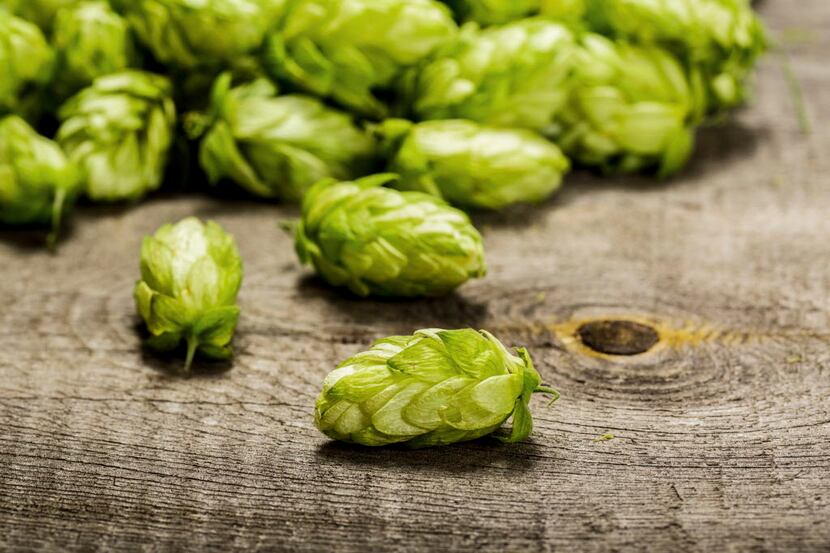A lot of things can affect a beer -- temperature during storage or transport, length of the boil, sunlight after bottling, carbonation levels and (some even say) vessel. The ingredients in the recipe of a brew have the biggest impact on flavor. Here's why you should value the four main components in beer.
Water
The water used in brewing contains minerals, such as manganese, zinc, copper and iron, that support the yeast and enzymes that work in tandem to turn cracked grains and hot water into beer. Local water imparts hard-to-reproduce subtleties in flavor, so even if someone is able to clone a recipe, their beer won't be quite the same without the water's terroir, or unique environment.
Why you can't have beer without it
Water comprises approximately 90 percent of every beer, so when a brewery first opens (or opens a new location), the brewers have to review their water profile for minerals, pH and salts, and do some tests or pilot batches to decide if they need to add or strip anything from their water before they can produce brews up to their craft standards.
"The correct level of calcium in water promotes yeast health and beer clarity," says Andrew Barker, Dallas Homebrew employee, homebrewer and a biology PhD student at University of North Texas. "While the chloride-to-sulfate ratio plays a role in determining whether malty sweetness vs. hop bitterness is emphasized."
Grain
The type of grain used greatly affects the flavor, texture and clarity of a beer. Changing the ratio of your "base" grain (usually barley) to your "specialty grains," such as wheat, rye and oat, can change your beer immensely. The amount of time the grain is roasted in the "malting" process affects the color -- even a small amount of a darkly roasted grain can dramatically darken a beer -- and the flavor, imparting roasted and sweet characteristics to the brew.
Barley is used for the bulk of a "grain bill," or recipe, since it can grow in many climates. It has the physical properties needed to self-filter for clarity (due to the cracked husk of the barley), and kernels with the best starch-to-protein ratio (known as two-row, four-row and six-row) to yield a relatively clear beer with solid head retention.
Why you can't have beer without it
Malted barley is to thank for a beer's color, sweetness, body and head retention. And of course, it provides the sugars that turn into alcohol.
"Malt is the foundation of the beer, and completely defines the color, mouthfeel, strength and a lot of other aspects," says Matt Morriss, founder and brewer at Rabbit Hole Brewing.
Hops
Hops come from the flowers of a twining vine and provide a bitter balance to the sweetness from grain, due to the alpha acids. Hops are preservative agents that allow beer to resist spoilage and provide resins for head retention, as well as aromas and flavors such as tropical fruit, pepper or earthiness.
Hops can be added at many stages of the brew process, including afterward, meaning you can create multiple different beers from the same hops by using different amounts and adding them at different times during the brewing process.
Why you can't have beer without it
Hops weren't always required to call a beverage "beer" -- before hops were discovered and incorporated into beer, brewers used gruit (a flower and herb mixture) and plants (like heather and juniper berries) to add depth and bitterness to their brews.
Luckily, hops are the standard now, adding a preservative agent (beta acids from lupulin), keeping beer fresh long enough to make it all the way to your fridge, helping with head retention and providing a range of bitterness to balance out the sweetness of malt, so you don't end up with sweet tea.
"We've had a great time experimenting with hops in our Cellarman's Reserve series of beers," in which the same base beer is flavored with new hops every brew, says Cody Martin, founder and brewer at Martin House Brewing Co. "It gives a chance to learn more about hops without becoming attached to certain hops and the supply issues that can go along with some of the more popular designer hops."
Yeast
This bug does all the work in turning your sugary hop-water (known as "wort") into a nicely carbonated, alcoholic beverage. Yeast can be pretty fickle to its environment, namely temperature and the alcohol and enzyme content of the wort. Each strain of yeast is unique and can produce a different flavor. The most well-known yeast flavors are the banana or clove notes you taste in many hefeweizens.
Why you can't have beer without it
While we haven't always known that yeast is one of the main ingredients in beer, it's always been a part of the process. Yeast converts sugar into alcohol and carbon dioxide. Early brewers knew something was happening, but they weren't aware wild yeast was turning their brew into beer.
"Yeast affects flavor, mouth-feel, carbonation, packaging and appearance," says Ryan Deyo, founder and head brewer at the Collective Brewing Project. "We've had hugely positive experiences with the maturation of our house-mixed culture in both our foeder and barrels. I've had people swear to me we've added fruit to our mixed culture ale, Wood Folk. It has notes of peach and pineapple that are purely yeast- and bacteria-derived."
The intangible ingredient

All four ingredients are essential to a beer, but if we can get romantic for a bit, the most important ingredient to any beer is the brewer, with his or her attention to detail, curiosity for experimentation and utter commitment to quality.
"A great recipe list, in the hands of an inexperienced individual, can easily become a drain pour, while those same ingredients could produce magical results in the hands of an experienced and knowledgeable brewer," says Joe Harris, homebrewer and vice president of South Austin Area Zymurgists Homebrew Club.

